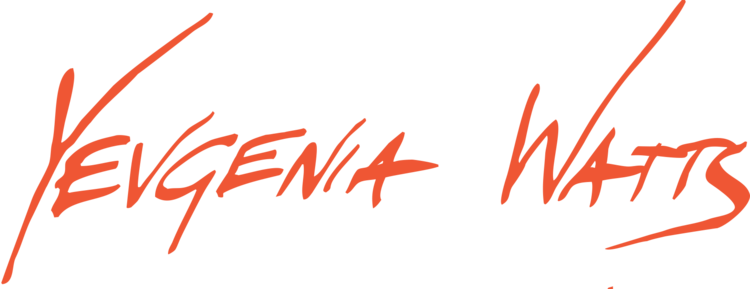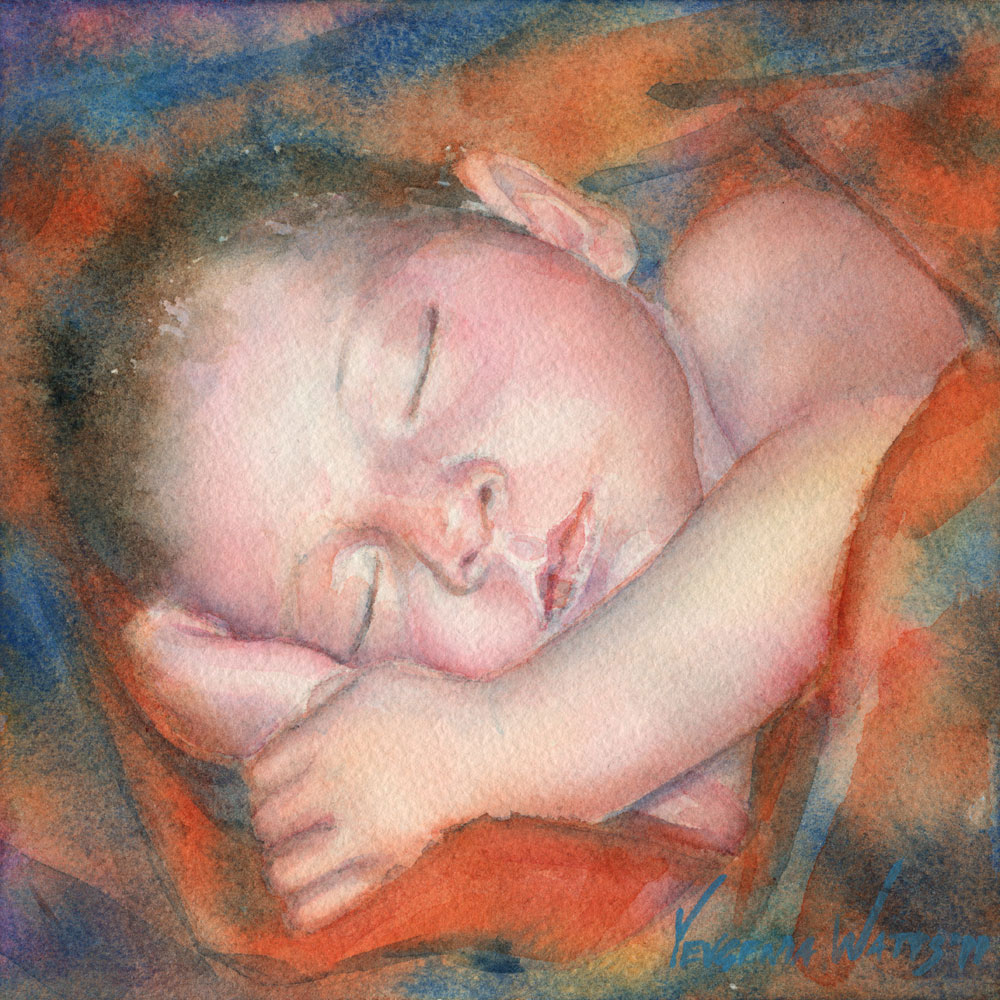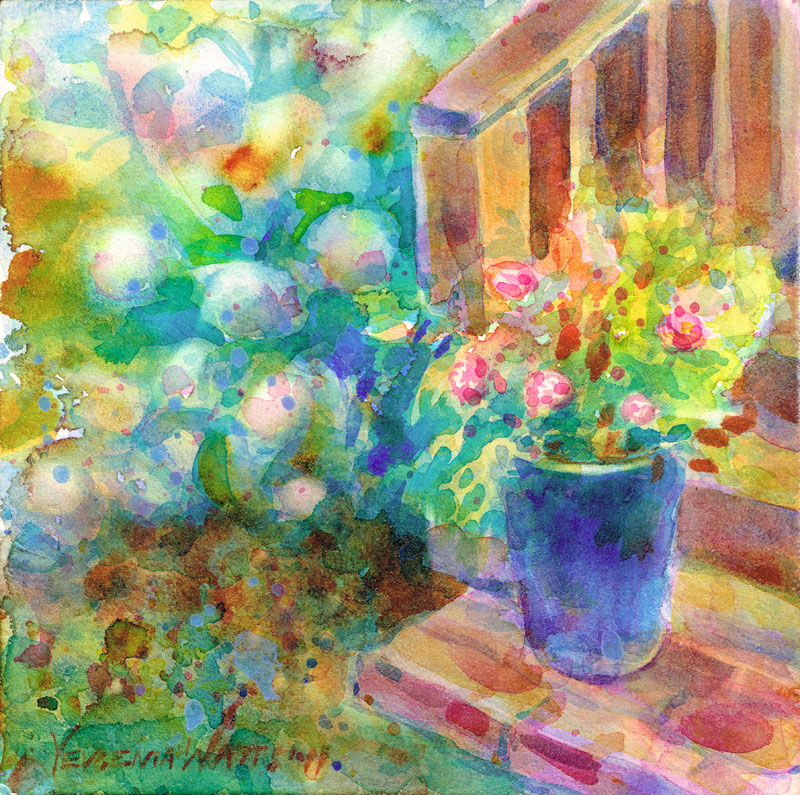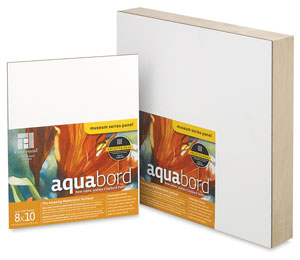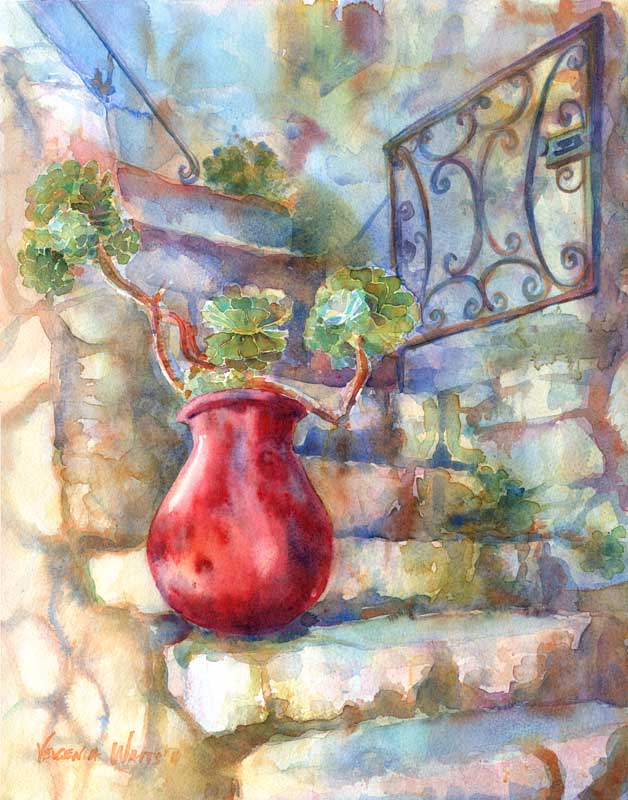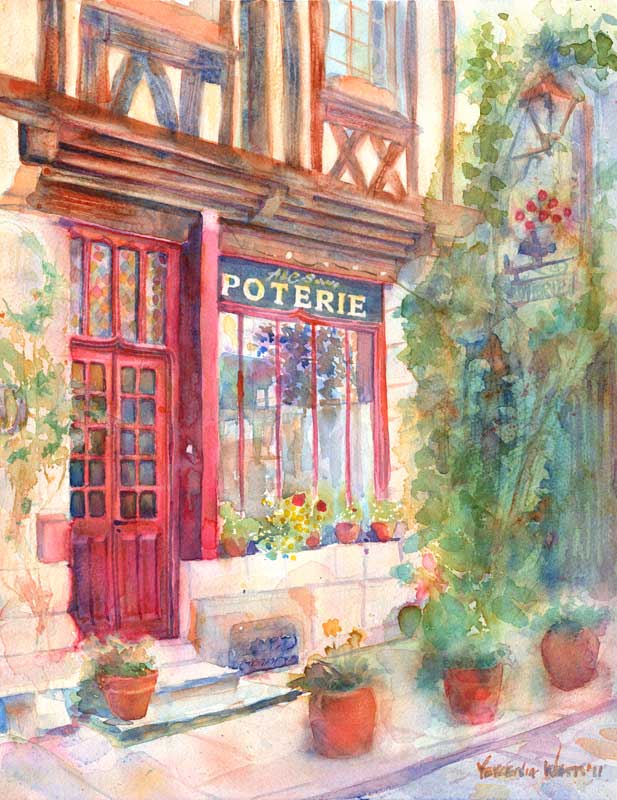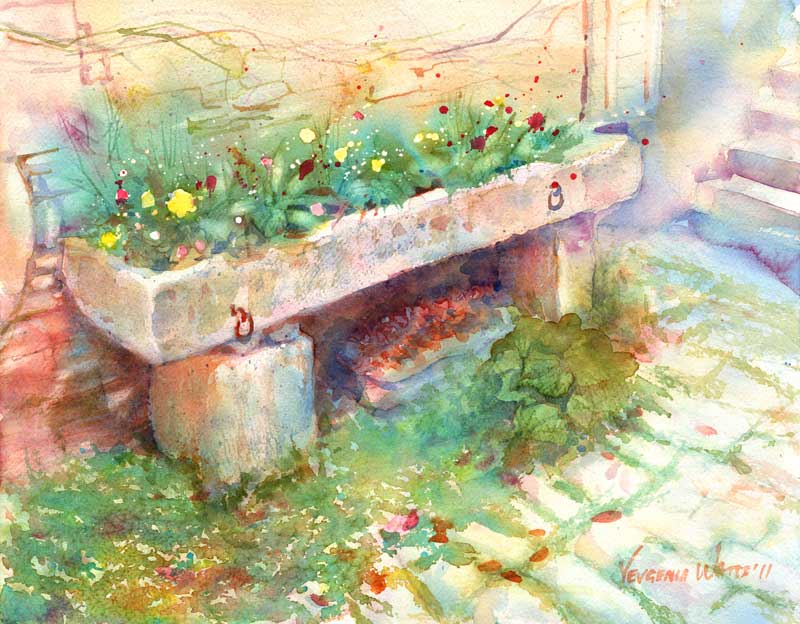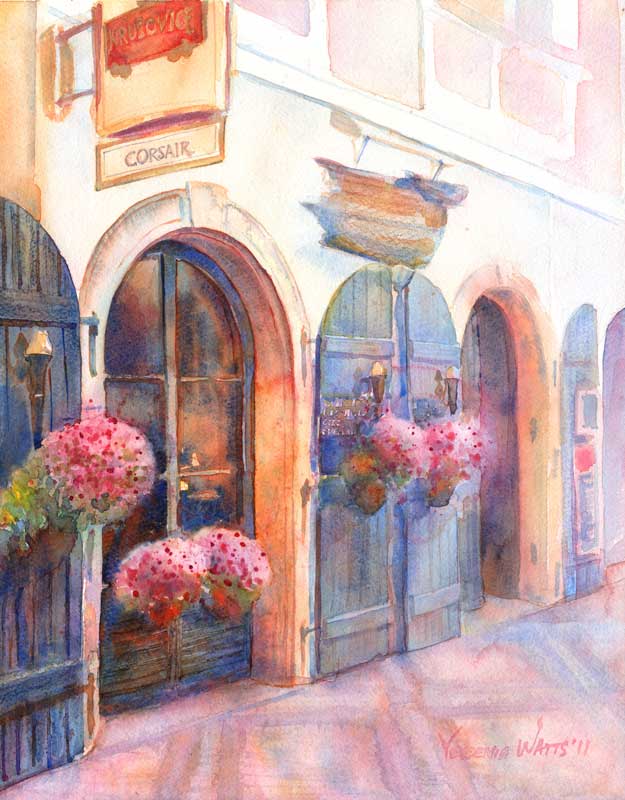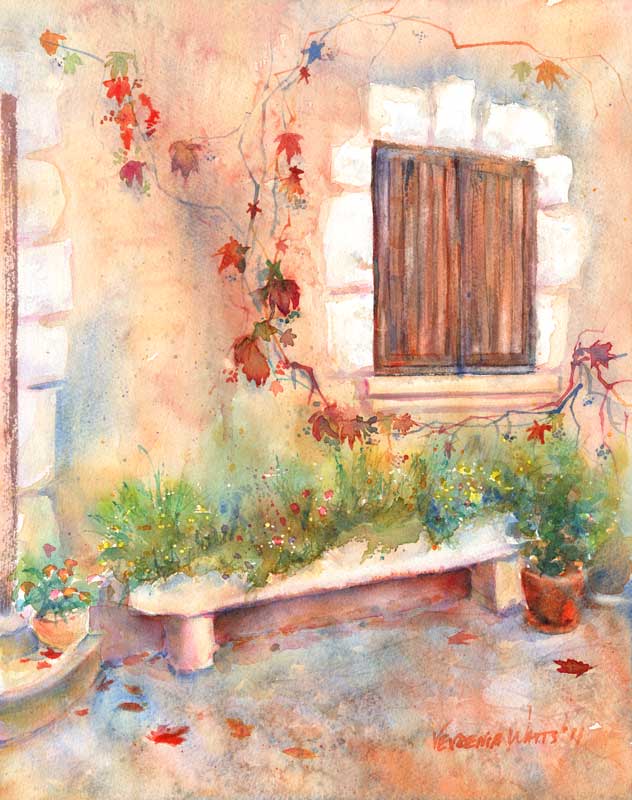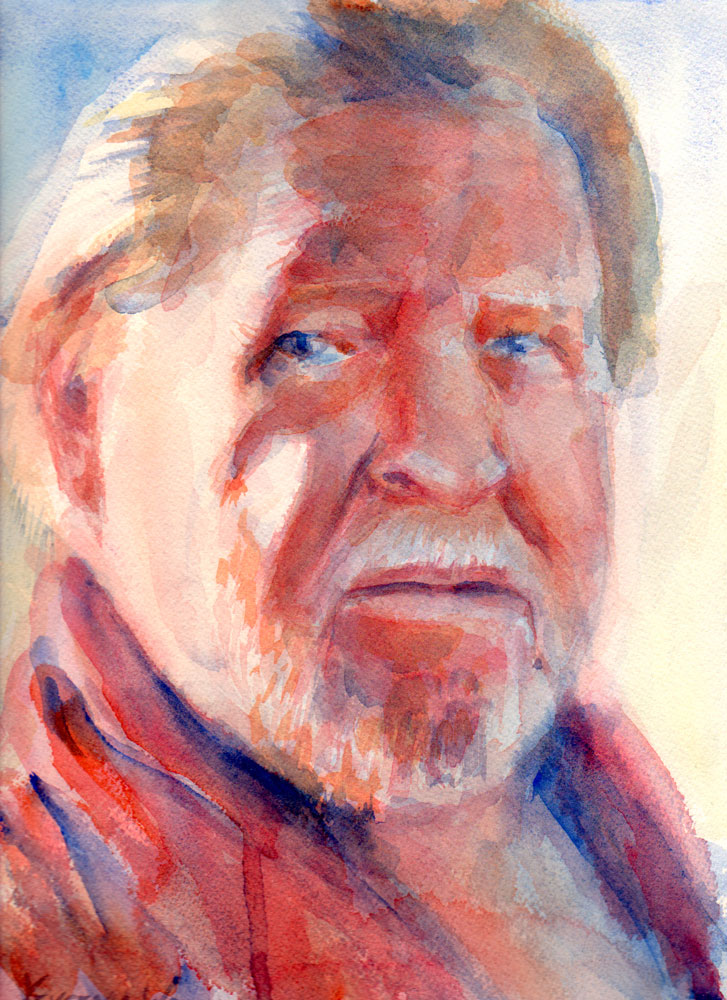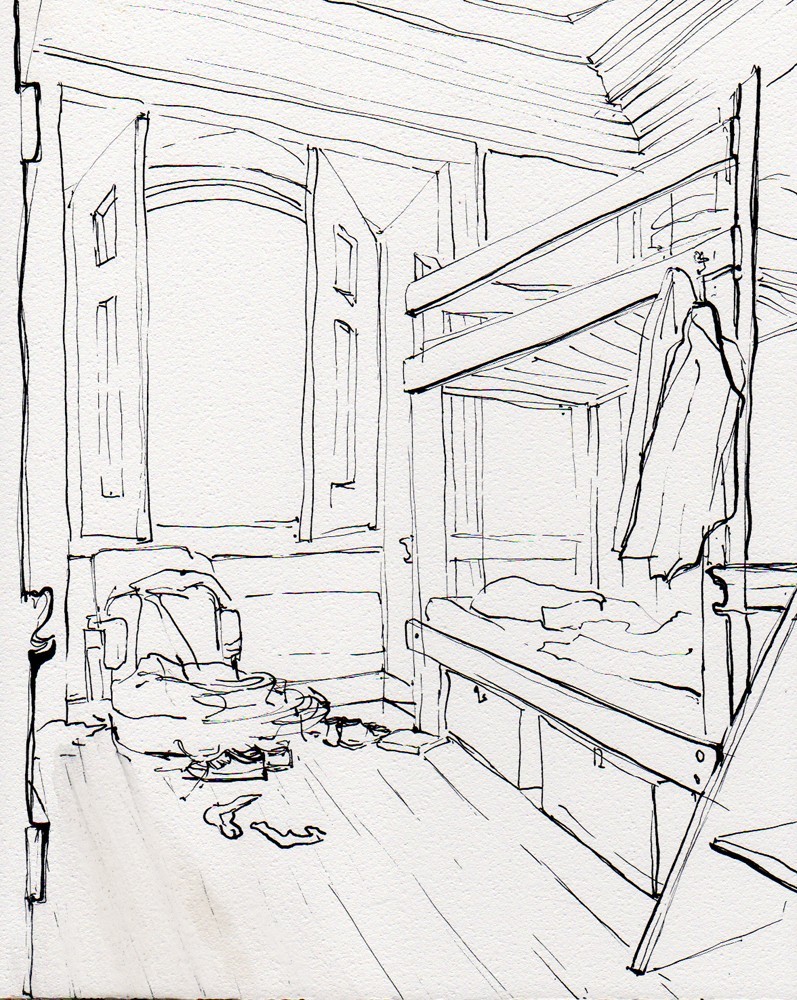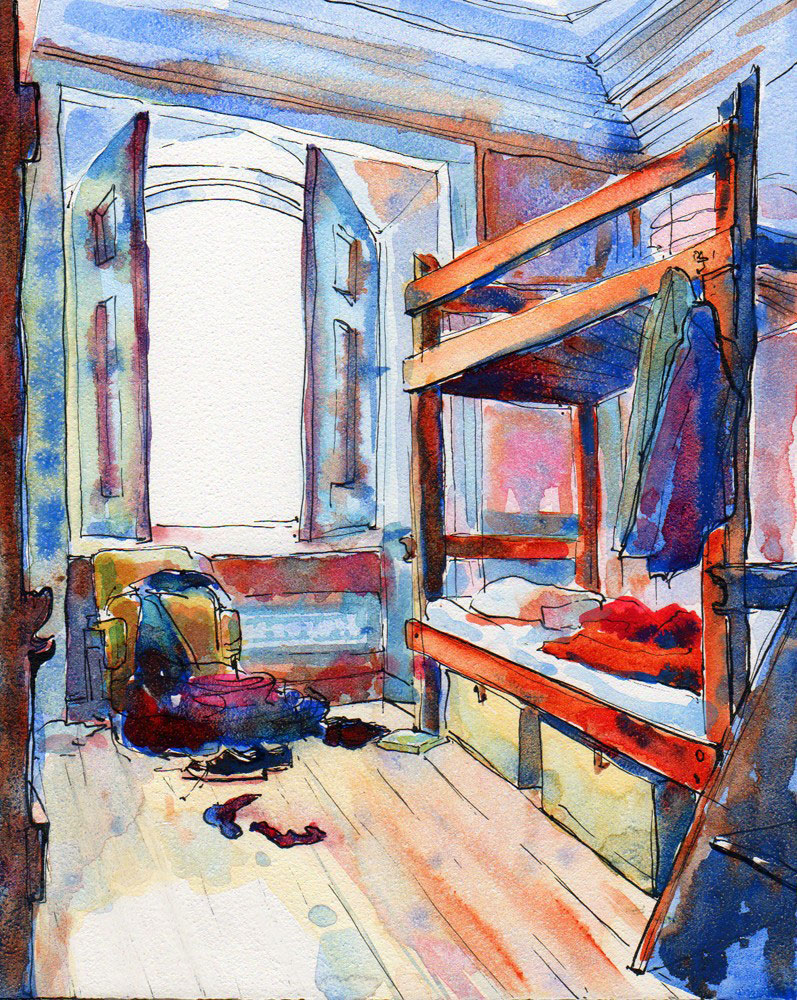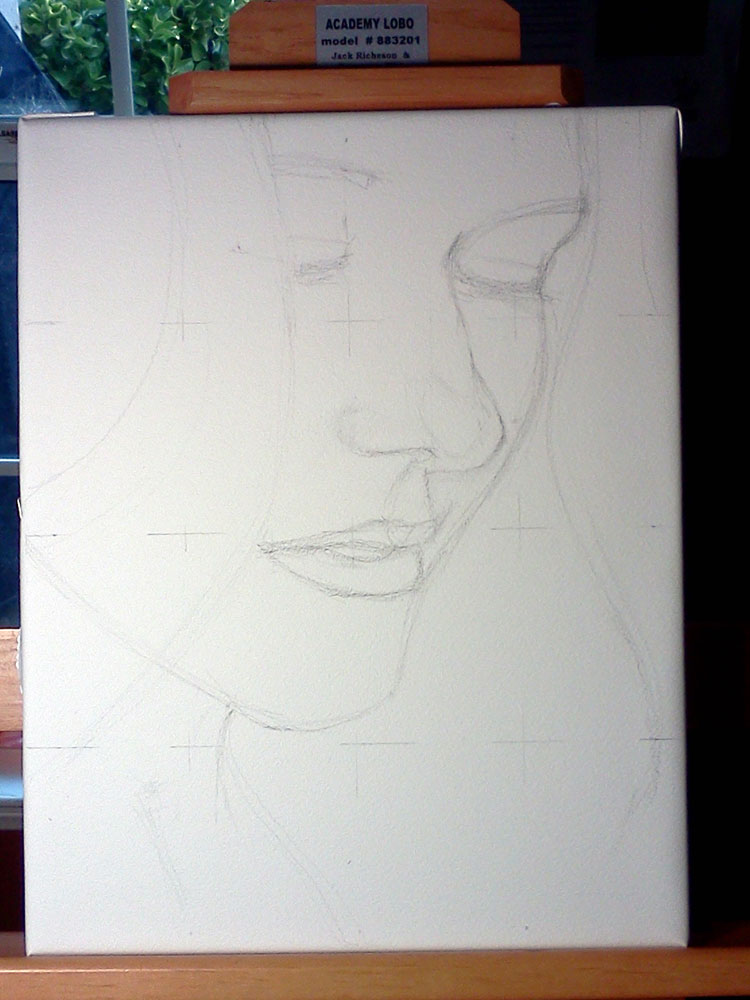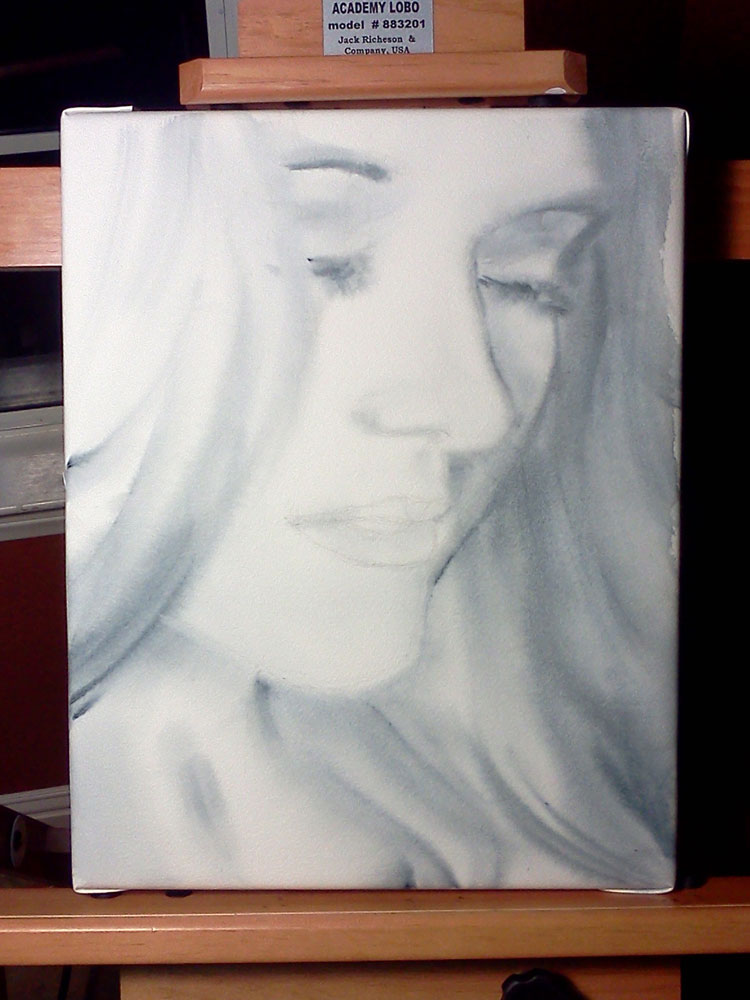This is Theo, the little brother of Simon, whose step-by-step portrait I posted a while ago.
Step 1. Thumbnail sketch, in color:
I use thumbnail sketches like these for three purposes:
1. This is the initial translation of a photo to an artwork that I do. It lets my collector see what I see when I look at their photo. It gives them a rough idea of the final result.
2. In the absence of a live model (not that I paint dead models...wait, yes, I do...) - anyway, most of the time, people, kids especially, do not sit for my portraits. They send me photos and these photos are the only source of information about them that I have. So, spending some time with the pictures, and making these little sketches of them, is a way for me to get to know them a little better.
3. Finally, these sketches are essential tools I use for planning my paintings. How much of the photo do I crop? Do I need to rotate things? Move something? Delete something? Which colors will I use? Which values will work best? All of these questions can be worked out in advance, in a thumbnail sketch.
On to Step 2, Drawing.
I used grid method for this drawing. I won't go into detail on how to do it here but I am including it into the bonus chapter of my "How I Paint Children" ebook, which you will be able to get very soon (and if you are on my email list, you will be the first to get it. For free.)
Step 3. First couple of layers. I keep things very wet at this point and paint runs all over the place. Yes, the green background bled into the boy's face but that's okay. Keep reading :)
Step 4. Once my first wash was dry, I lifted off some of the green on his face and began adding definition to the shadow areas.
Step 5. Adding light blue washes on his forehead, chin, and above his eyes. Defining his eyes, nose, lips, and ears more. More texture along the hairline.
Step 6. I don't always do it, but in this particular portrait, I smoothed out much of my brushwork on face. This will give the painting a more finished, detailed, and polished look. For that, I use a soft synthetic brush. Here's my favorite one:
This is a Cotman 1/2" flat brush but any softish synthetic brush will do. I originally bought it for the one and only watercolor class I took in the U.S., and it didn't take as a painting brush. It's great for blurring the edges though.
Step 7. I added another background wash to deepen the color. A little more fiddling with the details.
Step 8. The background wash left a hard edge around the head (phtalo blue tends to do that). So I softened the edge and lifted off some hairs here and there. Done!
